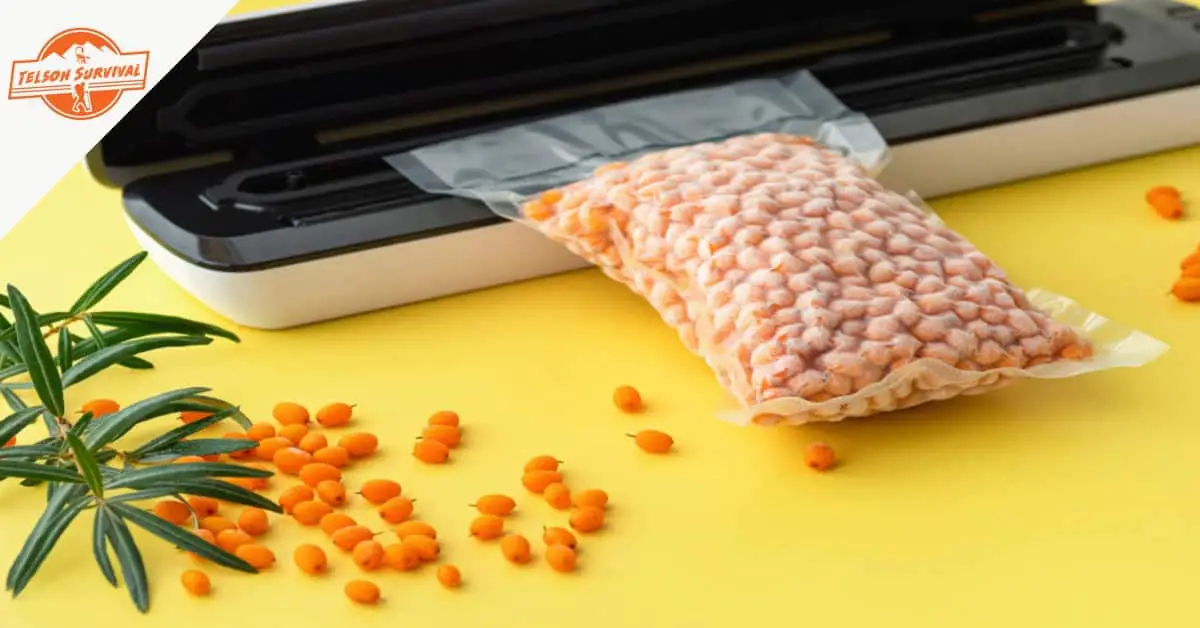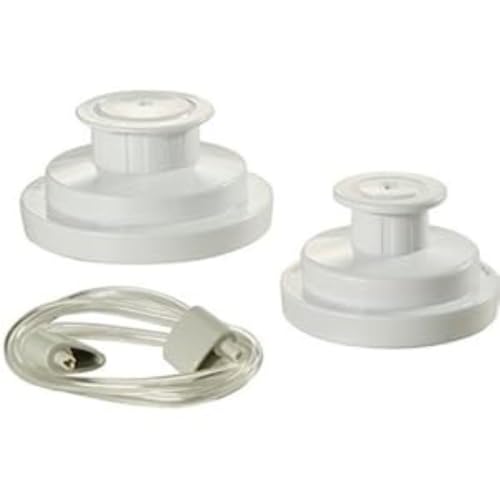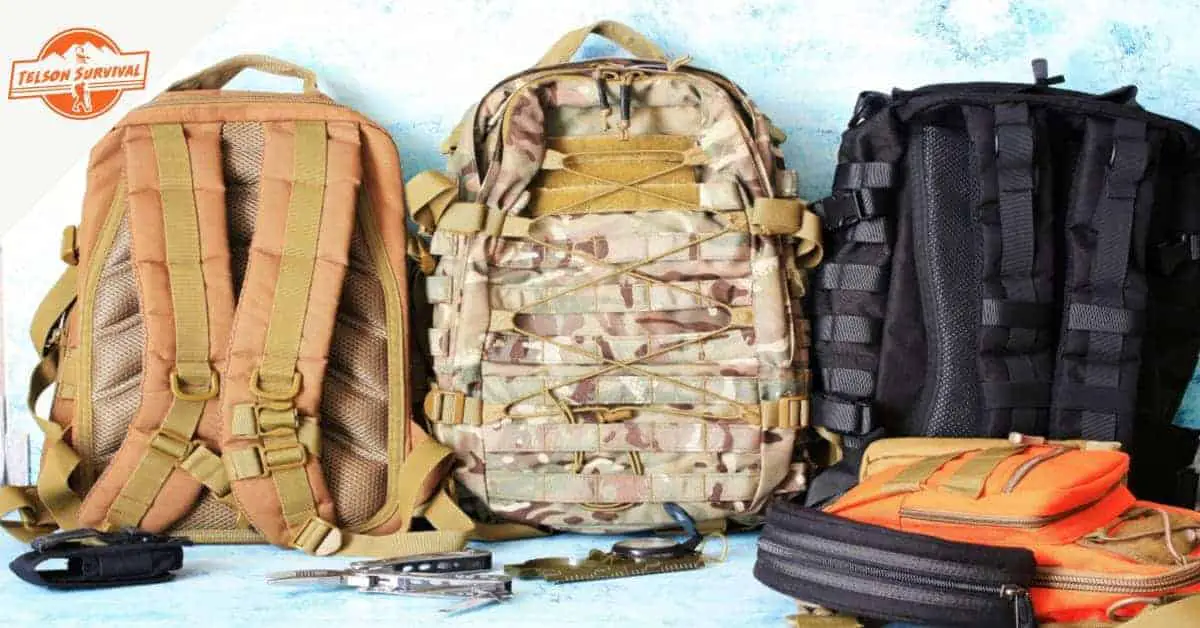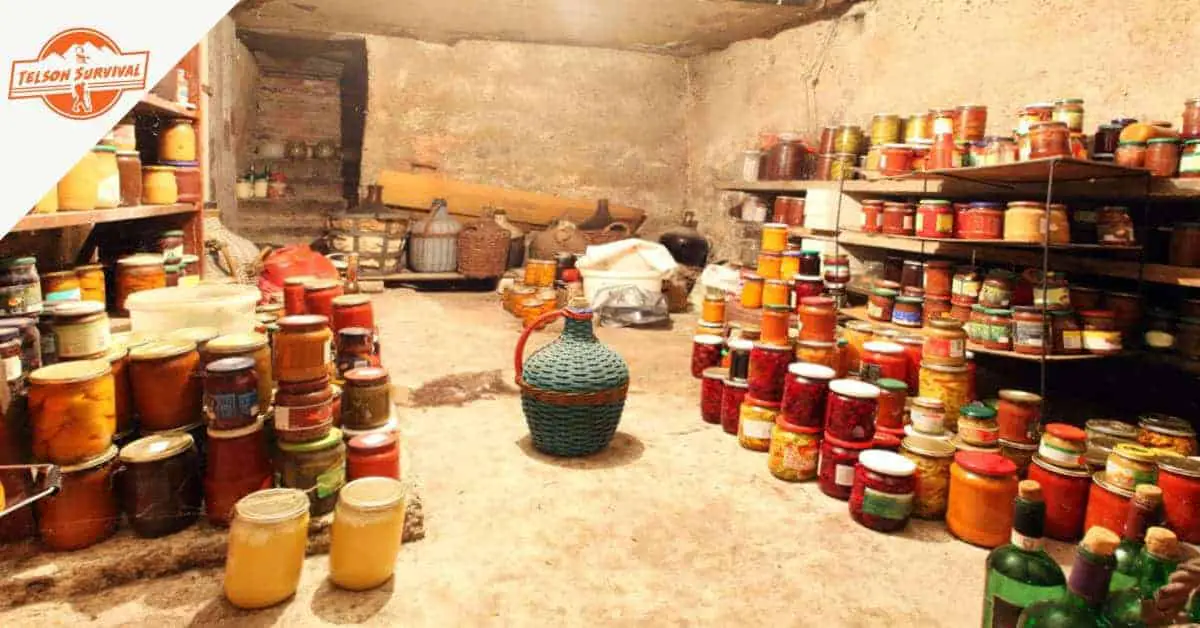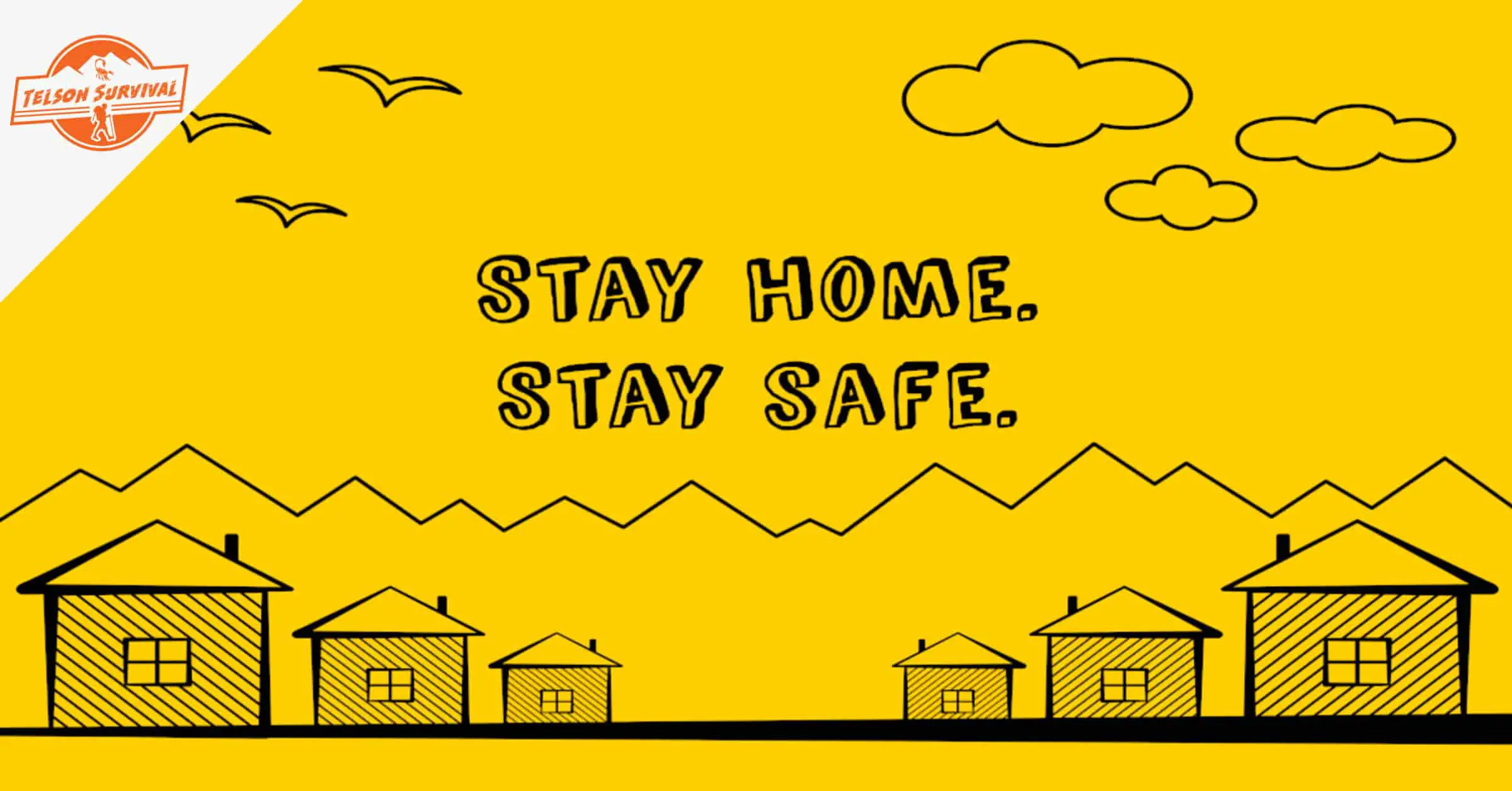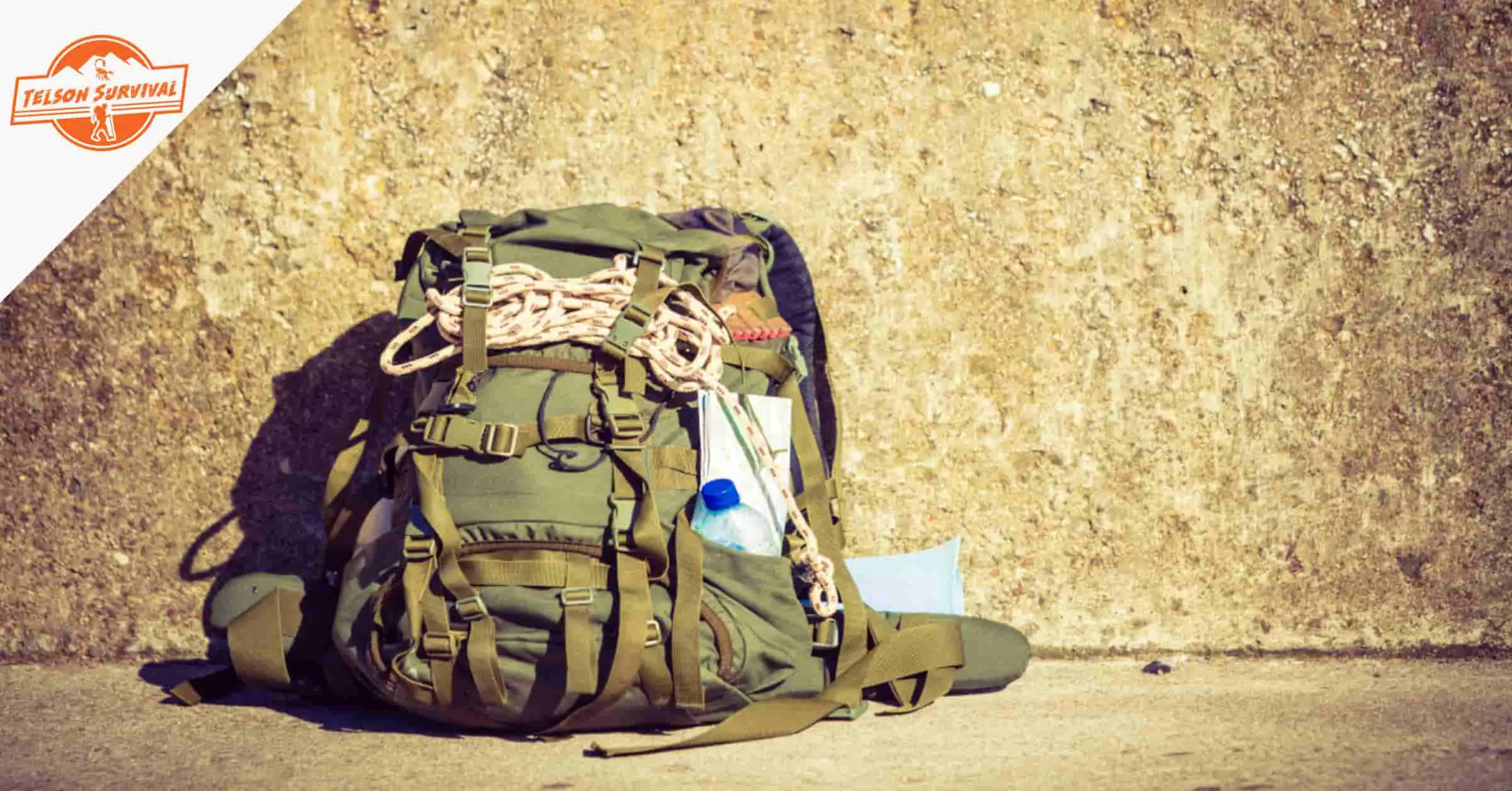Have you been dehydrating, freeze drying, or freezing food to bulk up your pantry and survival food cache?
If so, you've probably come to realize that having a high quality vacuum sealer is one of the most important tools in your food preservation toolbox.
Vacuum sealers are so versatile and every prepper should have one. But you might be wondering if vacuum sealers are really worth the money.
Consider the facts for yourself. With a good quality vacuum sealer you can:
- Prevent freezer burn on meat, cheese, and other frozen foods.
- Extend the shelf life of rice, beans, grains, and other survival foods.
- Easily prepare and store ready-to-eat survival meals.
- Reseal previously opened packages, preserving the quality of its contents.
- Waterproof documents and other valuables.
- Prepare waterproof survival packs, such as fire starter kits and first aid packages.
Obviously, a vacuum sealer is worth every penny for preppers and survivalists.
In a hurry? If you just want to get to our conclusions, here are our top picks and recommendations!
Last update on 2024-12-07 / Affiliate Links / Images from Amazon Product Advertising API
How do Vacuum Sealers Work?
The concept is simple. Vacuum sealers work by removing the air from around your food and then creating an airtight seal on the package.
The most common way this is done is by placing your food into a specially designed plastic bag or compatible container.
The bag is carefully placed in the vacuum sealer and with the push of a button, the air is removed. A seal is immediately made by a special heating element that literally fuses the two sides of the bag together.
With a good seal, oxygen will no longer be able to enter the bag. Depending on what you are vacuum sealing and how you will be storing it, you can preserve your food for weeks, months, or even years.
What Makes a Good Vacuum Sealer?
Before you run out to buy a vacuum sealer, you’ll need to take a moment to consider how you will be using this handy kitchen appliance.
- Will you be occasionally repackaging dried goods such as rice, beans, or other grains to extend their shelf life?
- Do you need to package large amounts of preserved food from your survival garden?
- Are you a hunter, fisherman, or farmer that will need to freeze large quantities of fresh fish or meat?
- Do you purchase bulk foods to repackage and save for later?
- Will you be making instant survival meals for cooking out in the field?
The answers to these questions are important because they will help you understand what is the best survival food vacuum sealer for you.
What to Look For in a Good Vacuum Sealer
There are certain features that you will want to look for when you are shopping for a new vacuum sealer, depending on how you plan to use your machine.
1. Recommended rest time between seals.
This one of the most important factors to consider when purchasing your vacuum sealer.
If you are planning on using your vacuum sealer only occasionally to process small batches of food, then you won’t mind letting the unit cool off between seals.
On the other hand, if you plan on processing large batches of food, you will become terribly frustrated and annoyed by a unit that slows you down because of the danger of overheating.
2. The width of the seal bar.
The width of your vacuum sealer will determine the size of the packages you will be able to vacuum seal.
Most people are fine with a bag that measures between 10 -12 inches wide. They find this to be plenty wide for vacuum sealing their survival food in smaller portions.
Depending on your needs, however, you may find it necessary to find a vacuum sealer that can handle wider packages.
Extra wide vacuum sealers that can seal bags up to 15 inches wide exist. These models are particularly handy for those of you that will need to preserve larger portions of food. They also work great for large cuts of meat, fish, or wild game.
3. The width of the seal.
The width of the seal can vary between 1 or 2 millimeters up to about 5 millimeters wide.
This detail is important because a wide seal is an insurance against the seal failing. Seals can fail for a variety of reasons. These include food or debris in the line of the seal or a wrinkle or crease in the bag.
Even a minimal breach in the seal can result in freezer burnt meat or spoiled food, as it will allow oxygen to slowly seep into the bag.
Wider seals are particularly practical when dealing with foods that tend to release debris such as flours, or wet foods that may release liquids.
4. Ease of repair.
This feature should not be overlooked. In an age of planned obsolescence, where things are made to be disposable, you need to take care to purchase a vacuum sealer that you can easily find replacement parts for and repair yourself.
As preppers, we know that we may not always be able to count on things being as easy as they are now. We need to be prepared to do maintenance on our survival food vacuum sealers, and they must be serviceable.
Repairability tends to come with a price tag though. If you are new to vacuum sealing or plan to only occasionally use your unit, you might consider this an optional requirement.
However, If you are investing for the future, it should be one of your most important considerations.
5. The different settings for vacuum sealing different kinds of foods.
Some vacuum sealers will have simple dry or moist settings that provide different suction strengths and times depending on whether you are sealing dry goods or wet goods.
Other units will offer a specific function for packaging delicate items such as fresh fruits or loaves of bread.
Still, others may even include preset sealing options for marinating food or sous vide cooking.
There are many options to choose from. Remember to choose a unit that has options that will specifically work for the foods you plan on vacuum sealing.
Other Factors to Consider
Other features that you may want to consider include:
- The size and weight of the vacuum sealer.
- The materials used in its construction.
- How easily cleanable the unit is.
- Other included features such as bag cutters, bag storage, compatible accessories, and portability options.
It is our recommendation that you invest in the best vacuum sealer that will meet your most potentially demanding usage. Even if you plan on only using your vacuum sealer occasionally, you may find yourself in a position of having to process a large batch of food.
You never know what the future may bring, and you want to have the right appliances on hand that can rise up to meet any challenge.
The 7 Best Survival Food Vacuum Sealers
Vacuum Sealer Machine by Mueller
This machine is an economical option for those of you who are just getting started in the world of vacuum sealing and who plan on processing smaller batches of food. It is easy and intuitive to use.
Last update on 2024-12-07 / Affiliate Links / Images from Amazon Product Advertising API
Here are the best parts of the Vacuum Sealer Machine by Mueller:
- Seals up to 10 in wide bags
- Comes with a suction hose.
- Has an easily cleanable drip tray.
- Allows you to seal bags without vacuuming.
- Is compatible with Foodsaver brand accessories.
- It has easy to use wet/dry settings.
The cons:
- You have to wait quite a bit between seals or risk overheating the machine.
- It does not include a bag cutter.
- Replacement parts are not readily available.
- No built-in bag storage.
Geryon Vacuum Sealer
If you are looking for a reliable entry-level vacuum sealer but prefer to use a larger size bag, this is the unit for you. It's a great starter vacuum sealer and is noteworthy for its reliability and ease of use.
The Geryon Vacuum Sealer is a perfect option for those preppers who take survival food preservation seriously and plan to process mid-sized batches more frequently.
Last update on 2024-12-07 / Affiliate Links / Images from Amazon Product Advertising API
Here are the best parts of the Geryon Vacuum Sealer:
- Fits up to an 11.5 in bag.
- Comes with a suction hose.
- Is easily cleanable.
- Has a ‘seal only’ feature.
- Is compatible with Foodsaver brand accessories.
- Has easy to use wet/dry settings.
- Requires approximately 30 - 40 seconds between seals.
- Easy to clean.
The cons:
- Does not include a bag cutter or roll storage.
- Replacement parts are not readily available.
BLUsmart Vacuum Sealer
The Blusmart vacuum sealer makes our list as the best "bells and whistles" vacuum sealer. If you are a prepper who plans on creating instant survival meals, this is the machine for you.
Many recipes for dehydrated meals require specific weights of different ingredients (for example, you may need 100g dehydrated rice, 10g dehydrated carrots, etc.). The BLUsmart Vacuum Sealer features a removable digital scale. This makes measuring out portions a breeze as you vacuum seal your survival food.
No products found.
This is what else we like about the BLUsmart Vacuum Sealer:
- It has multiple sealing modes, including wet/dry and gentle options.
- Has a ‘seal only’ function.
- Fits up to an 11 in. wide bag.
- Includes a suction hose.
- Compatible with food saver accessories.
- Creates a thick seal on the bag.
- Includes a built-in bag cutter.
- Has a removable drip tray for easy cleaning.
- Has an automatic lid.
- Requires apx. 40 seconds between seals.
The cons:
- Is not easily repairable.
Vacmaster Pro 360
The Vacmaster Pro is a step up for those of you who plan to get some serious use out of your vacuum sealer. It's a serious workhorse that is known for its reliability.
The Vacmaster Pro is perfect for those of you who need to preserve larger portions of food or bigger cuts of meat.
Last update on 2024-12-07 / Affiliate Links / Images from Amazon Product Advertising API
This is what we like about the Vacmaster Pro:
- Seals up to 15 in. wide bags.
- Has a cooling system, so no need to wait between seals.
- Has a pulse function for precise vacuum pressure control.
- Includes a bag cutter and built-in bag storage.
- Comes with an accessory hose.
- Durable, stainless steel exterior.
- It has a wide, 5mm seal.
- Features a transparent lid to guarantee proper alignment of the bag.
- Replacement parts are readily available from the manufacturer.
The cons:
- It’s a very bulky machine.
Foodsaver Gamesaver Big Game Sealing System
The Gamesaver is the vacuum sealer for those of you who need portability from your vacuum sealer. Aside from portability, this unit lets you seal a lot of food, fast.
The concept of the Foodsaver Gamesaver Big Game Sealing System is simple - a portable, heavy-duty vacuum sealer that lets you process your kill or your catch in the field.
Last update on 2024-12-07 / Affiliate Links / Images from Amazon Product Advertising API
Here are the details for the Foodsaver Gamesaver Big Game Sealing System:
- It comes with a 15 ft, 12 volt DC adaptor to let you work in the field.
- Has a carrying handle.
- Has a roll cutter and roll storage.
- Includes an accessory hose.
- Can seal up to 80 consecutive seals.
- Easy to clean with a removable drip tray.
- Seals bags up to 11 in. wide.
- Has an extra wide seal.
- The manufacturer offers replacement parts.
The cons:
- The sealing mechanism tends to malfunction when there is too much moisture.
- There is no wet/dry function.
Weston Pro 2300
This survival food vacuum sealer is an ideal choice for those of you who plan on vacuum sealing large amounts of food regularly. The Weston Pro 2300 is a commercial-grade vacuum sealer that is meant for home use.
If you are looking for a way to store large amounts of dehydrated or freeze dried food, fresh harvests from your survival garden, large portions of meat (both fresh and dehydrated), and anything else you can think of then this is the vacuum sealer for you.
Last update on 2024-12-07 / Affiliate Links / Images from Amazon Product Advertising API
Here are the "pro's" of the Weston Pro 2300:
- Seals bags up to 15 in. wide.
- Has an extra thick seal of 5mm.
- Has a fan to prevent overheating which allows for continuous operation.
- Durable, stainless steel construction.
- Easily cleanable.
- Detachable power cord for easy storage.
- Transparent lid for exact bag alignment.
- Manual seal option for optimal vacuum pressure control.
- Is compatible with vacuum hose attachments.
- Compatible with Foodsaver accessories.
- Replacement parts are readily available.
The cons:
- It is heavy and bulky.
- Does not include the vacuum hose accessory.
- No bag cutter or bag storage.
Avid Armor A100 Vacuum Sealer
This is another commercial strength vacuum sealer for home use that comes in at a slightly more economical price than the higher-end Weston model.
The Avid Armor A100 Vacuum Sealer is another great option for those of you who expect to process large amounts of survival foods on a regular basis.
There is one major difference that you should take note of. This machine seals slightly smaller bags that are up to 12 in wide.
This means that the portions you can vacuum seal will be slightly smaller than with the Weston model. It's also worth noting that this machine is not nearly as bulky as the more expensive Weston vacuum sealer.
Last update on 2024-12-07 / Affiliate Links / Images from Amazon Product Advertising API
Here are the best things about the Avid Armor A100 Vacuum Sealer:
- Seals up to 12 in. wide bags.
- Makes a wide, 5mm seal.
- Is easily repairable and comes with a full maintenance kit.
- Has a fan to prevent overheating for continuous operation.
- Solid, stainless steel construction.
- Includes a vacuum hose accessory.
- Has a pulse function for vacuum sealing delicate items.
- Has a ‘seal only’ function.
- Easily cleanable with removable drip tray.
- Works with Foodsaver brand accessories.
The cons:
- Does not include a bag cutter or roll storage.
The Best Vacuum Sealer Accessories
You’ll quickly come to realize that a major part of the practicality of your vacuum sealer comes from the accessories that you can use with it.
One of the most important accessories that you can purchase is the mason jar vacuum sealer attachment.
Last update on 2024-12-07 / Affiliate Links / Images from Amazon Product Advertising API
This will allow you to ‘dry can’ via vacuum sealing your mason jars. This is a fantastic option if you want to preserve dehydrated or freeze dried survival foods for long term storage. It's a handy tool for extending the shelf life of anything you would think to store in a jar.
Fortunately, the Foodsaver brand mason jar attachment is compatible with nearly every brand of vacuum sealer on the market. This makes it the obvious best choice for your vacuum sealer accessory kit.
Aside from the mason jar attachments, you may want to consider purchasing the following accessories for preserving your survival food:
- Bone Guards Sheets - These extra thick sheets of plastic are meant to be placed inside the vacuum sealer bag, over cuts of meat that may contain bones. They are meant to prevent tiny punctures in the bag that can cause air to seep into the bag, effectively ruining the seal.
Last update on 2024-12-07 / Affiliate Links / Images from Amazon Product Advertising API
The guard sheets are also extremely practical for vacuum sealing dehydrated or freeze dried emergency survival meals. Unfortunately, dehydrated rice, pasta, and even beans can become ‘sharp’ food items, and may puncture a regular vacuum sealer bag.
With these reusable guards, you can easily prevent any inconvenient punctures.
- Bag Cutter - Not all vacuum sealer machines come with a built-in bag cutter. If you plan on using vacuum bag rolls, you will want a quick and easy way to cut your custom bags and this handy little tool will do just that.
Last update on 2024-12-07 / Affiliate Links / Images from Amazon Product Advertising API
- Bag Holder - You will quickly learn that even the smallest mess on your bag can create issues when it comes to achieving a good seal. This handy bag holder allows you to roll your bag back to keep it clean and debris free. It simultaneously props the bag up for easy filling.
Last update on 2024-12-07 / Affiliate Links / Images from Amazon Product Advertising API
These handy tools are specially designed to facilitate the successful vacuum sealing of your survival food. Even with the best vacuum sealer, there are tricks of the trade that these little tools will help you master
Some Tips for Successful Vacuum Sealing Survival Food
So now that you are all set to start vacuum sealing, keep the following tips in mind as you get started.
It might take some trial and error to get your technique down, but with a little practice on your own vacuum sealer, you will become an expert in no time.
- Try to get your food as dry as possible before vacuum sealing. Pat dry vegetables and consider pre-freezing meats and other liquid foods such as soups or stews before vacuum sealing them into a bag.
- Do not fill your bag completely. You will need to leave approximately 2 to 3 inches from the top of the bag to allow for a good seal.
- Try to avoid dirtying the bag in the seal area.
- When vacuum sealing “sharp” foods, be sure to use a bone guard. You can also use paper bags or double bag the food. Preventing punctures in the vacuum bag is fundamental to preserving your foods!
- If you plan on cooking your food in the bag (for either sous vide cooking, reheating ready-made meals, or rehydrating survival meals in the field) be sure to choose bags that can safely withstand the heat of boiling water.
- Follow the manufacturer’s instructions for your vacuum sealer. Respect required cooling times between seals.
Happy Sealing!
Vacuum sealers are a necessary tool for building up your survival food cache and assuring food security for yourself and your family.
But be careful - you might get struck by 'vacuum sealer fever'. It's easy to become obsessed and try to vacuum seal everything - because nearly everything can be vacuum sealed!
Survival Food Vacuum Sealer FAQs
Can I laminate important documents with my vacuum sealer?
Not exactly. Vacuum sealers are awesome for waterproofing and protecting documents for long term storage, but can, unfortunately, damage important documents if they are not prepared properly for storage.
The thing is, the force of the vacuum sealer can cause papers to curl and wrinkle inside the vacuum sealed bag.
It's recommended that you place your documents on a stiff cardboard backing before sealing them into a protective bag. You can also use a hard transparent sheet protector.
Once your papers are protected with a solid backing, you can certainly vacuum seal them to protect them from moisture and oxygen damage.
Can I vacuum seal mylar bags?
A question that comes up over and over again is whether you can vacuum seal mylar bags. The short answer is no.
Vacuum sealers use a special texturized bag that allows for air to flow out of the bag during the vacuum process. Mylar bags are smooth. This means they don’t respond to the vacuuming process.
You can, however, seal mylar bags with the sealing function on most vacuum sealing machines.
If you plan on storing your dehydrated or freeze dried survival foods in mylar bags, you can easily include an oxygen absorber inside the package before sealing it shut.

